Your retirement income could come from one or more of many different sources. Perhaps it’s made up from a super drawdown, or part Age Pension entitlement, work income, share dividends, franking credits, interest on investments, rent from an investment property … the list goes on.
Or, you may be like Darren, who receives the bulk of his income from a Defined Benefit Pension (DBP). He recently asked us to explain the way a wider range of retirement income inputs might combine to create a reasonable retirement lifestyle. Here’s how we explained the way these different sources of retirement income work together.
Retiring with a Defined Benefit Pension
Defined benefit income streams aren’t as common as they once were. Decades ago, they were standard for many public servants and professionals, offering a regular income for life based on salary and years of service. However, these schemes posed significant financial risk for employers, who were essentially on the hook for making lifetime income payments. Over time, this has led to their gradual phase-out in favour of the accumulation-style superannuation where the investment and longevity risk sits with the individual.
If you’re retiring with a defined benefit income stream today, you’re part of a smaller group. These pensions are assessed differently for both tax and Centrelink purposes, so it’s worth taking the time to understand how they interact with your other retirement income sources – especially if you’re also eligible for the Age Pension or managing an Account-Based Pension.
More than just a lump sum
Retirement planning advice often focuses on building up your super — and rightly so. The standard benchmarks, like those from ASFA, assume you’ll retire with a lump sum and draw it down gradually through an Account-Based Pension (ABP). But what if part of your income isn’t from an account you control, but from a Defined Benefit Pension (DBP) that pays you a guaranteed income for life? And what if you also have other investments or superannuation savings alongside it? Planning becomes more complex – because your retirement income isn’t just coming from one pot. That’s why it’s important to understand how these different income sources work together to support your lifestyle, access to the Age Pension, and long-term financial security.
Defined Benefit Pensions: How they work
A Defined Benefit Pension (DBP) provides a guaranteed income stream, usually based on your salary and years of service. Unlike Account-Based Pensions (ABPs), your income isn’t subject to market performance. It’s predictable, secure—and potentially powerful when paired with other retirement income sources.
To plan effectively, you’ll need to know:
- The amount of income you’ll receive each year, and whether it’s indexed
- How that income fits with your super and investments
- How it affects any Age Pension entitlements and tax
How Centrelink assesses Defined Benefit Pensions
Defined Benefit income is generally included in the income test for the Age Pension. The value of a DBP is usually exempt from the asset test, though some exceptions apply.
The income test treatment depends on when your DBP started.
Here are the key rules:
From 1 January 2016 – 10% cap introduced
For most people, only part of your Defined Benefit income is excluded from the income test—but the amount that can be excluded is capped.
- Centrelink allows a maximum 10% deduction from your gross DBP income.
- Even if your tax-free component is more than 10%, only 10% can be excluded.
- Military pensions (DFRDB, MilitarySuper, DFRB) are exempt from this cap.
From 31 May 2024 – Military invalidity pensions reclassified
Some military invalidity pensions are no longer considered Defined Benefit income streams.
- This applies to invalidity pensions from MilitarySuper and DFRDB.
- These are now assessed based on their tax-free portion, and the 10% cap does not apply.
- But if the invalidity pension isn’t related to military service, the cap may still apply.
Defined Benefit Pensions started before 1 July 2007 – grandfathered rules apply
Older DBPs follow different rules for calculating income exclusions.
- If your DBP started before 1 July 2007, the excluded amount is based on your Undeducted Purchase Price (UPP).
- DBPs started from 1 July 2007 onwards use the tax-free component to determine how much is excluded, and this usually increases with CPI.
How Defined Benefit Pensions are valued for the Transfer Balance Cap
The Transfer Balance Cap (TBC) limits how much you can move into retirement phase income streams. As of 1 July 2025, the general TBC has just increased to $2 million.
While Defined Benefit Pensions don’t have a visible account balance, they are given a special value for TBC purposes. For most lifetime pensions, this value is calculated by annualising the first payment and multiplying by 16.
For example:
- If you receive $32,000 per year, the special value is $32,000 × 16 = $512,000.
If your Defined Benefit Pension pushes you over your personal cap and you also have an Account-Based Pension, some of the excess may become assessable income. This could also affect your eligibility for the superannuation income stream tax offset.
Importantly, your super fund reports this special value directly to the ATO—either when your income stream begins, or if there’s a major change such as a reversion to a spouse.
When Defined Benefit income is subject to the asset test
Although most Defined Benefit Pensions are asset test exempt, there are cases where they are not—especially if the income stream doesn’t meet Centrelink’s exemption rules.
In those cases, the income stream is valued using a Pension Valuation Factor (PVF), which multiplies the annual income by a set factor to estimate an equivalent asset value under the Social Security Act.
Case Study: Darren’s Defined Benefit Retirement
We often see retirement planning framed around how much super you might need for a comfortable retirement. The ASFA Retirement Standard suggests that for a single homeowner, spending around $52,000 per year could support a comfortable lifestyle. This would usually require about $595,000 in super at retirement.
But how do you compare that benchmark if part of your income comes from a Defined Benefit Pension, which doesn’t sit in an account with a visible balance?
Darren* (name changed) encouraged us to discuss this more, and has shared his situation so we could explain the detail for the benefit of other Retirement Essentials members. He receives $32,000 a year from his Defined Benefit Pension. Applying the Transfer Balance Cap formula (×16), this equates to a special value of $512,000—comparable to having that amount in a standard Account-Based Pension account.
If Darren also has $83,000 in an Account-Based Pension, his total effective super balance reaches $595,000—matching the ASFA benchmark.
Darren’s annual retirement income would look like this:
- Defined Benefit Pension Income of $32,000
- Age Pension entitlement of $17,000
- Additional drawdowns from Account-Based Pension of $3,000
Together, that gives him $52,000 per year — a stable income that meets the ASFA standard for a comfortable retirement.
The benefit of Darren’s situation is the guaranteed income for life in addition to Age Pension support. Along with some additional superannuation savings in a flexible Account-Based Pension, he can draw down extra income to meet spending needs or cover unexpected expenses. It’s a solid blend of security and flexibility.
When planning retirement with a Defined Benefit Pension, the mix of income is different from the norm and has some extra considerations for tax, Age Pension and superannuation balance with the Transfer Balance Cap. What helps is to be able to explore the options with a view of how these different elements work together, to validate your thinking, and to give some reassurance that you are on the right track.
Bringing it all together
Planning for retirement with a Defined Benefit Pension is different from the usual lump sum approach. There are extra considerations around:
- Centrelink’s income and asset test
- Tax and Transfer Balance Cap rules
- How to structure your income for financial security
Exploring these options can provide reassurance that you’re on the right track.
Ready to make the most of your own retirement income streams?
Navigating multiple retirement income sources can be complex. Why not book a Retirement Advice Consultation to develop a strategy that considers your entitlements and financial goals.
If you’re unsure of how your Defined Benefit Pension income stream will be assessed, an Age Pension Consultation could be beneficial.
What about you?
Are you factoring Centrelink rules into your retirement strategy?
Do you have a Defined Benefit Pension? If so, how has it shaped your retirement planning?





